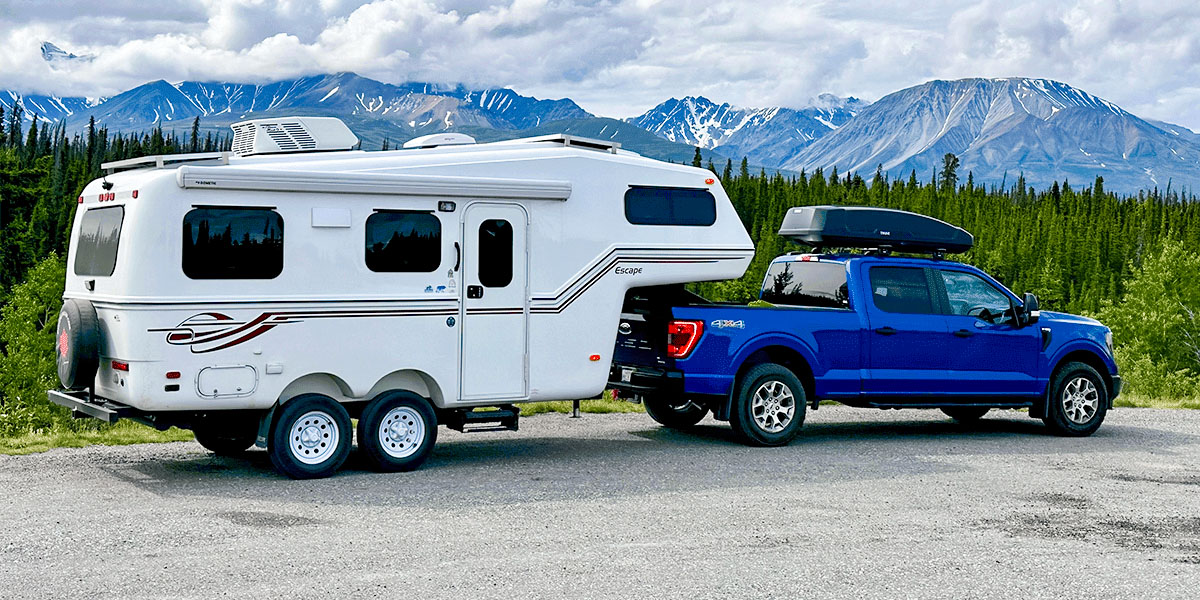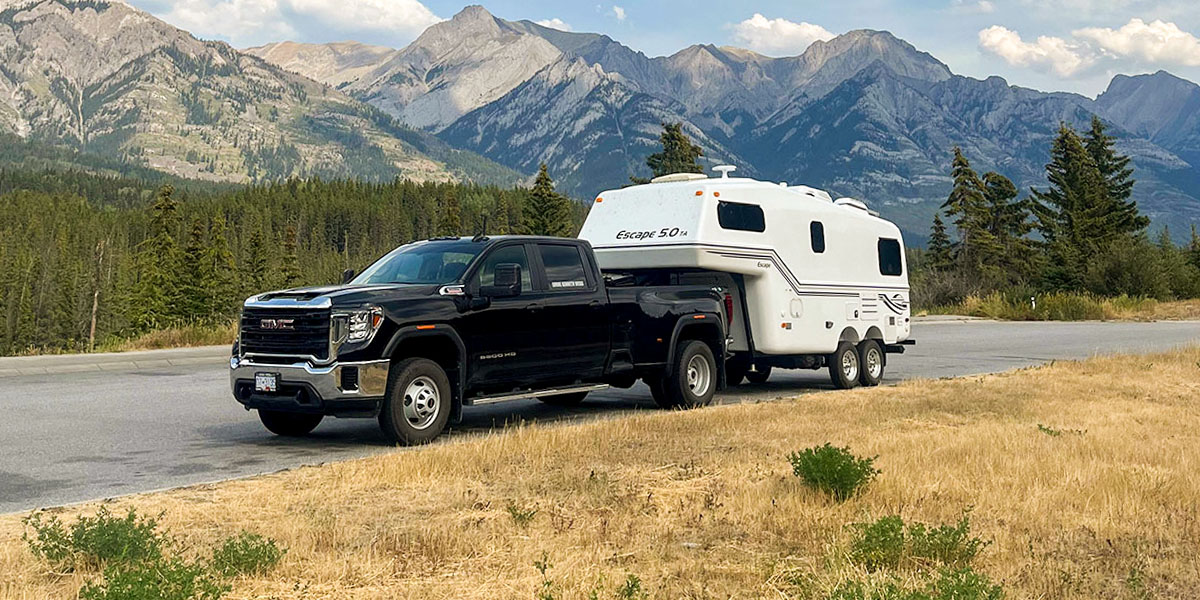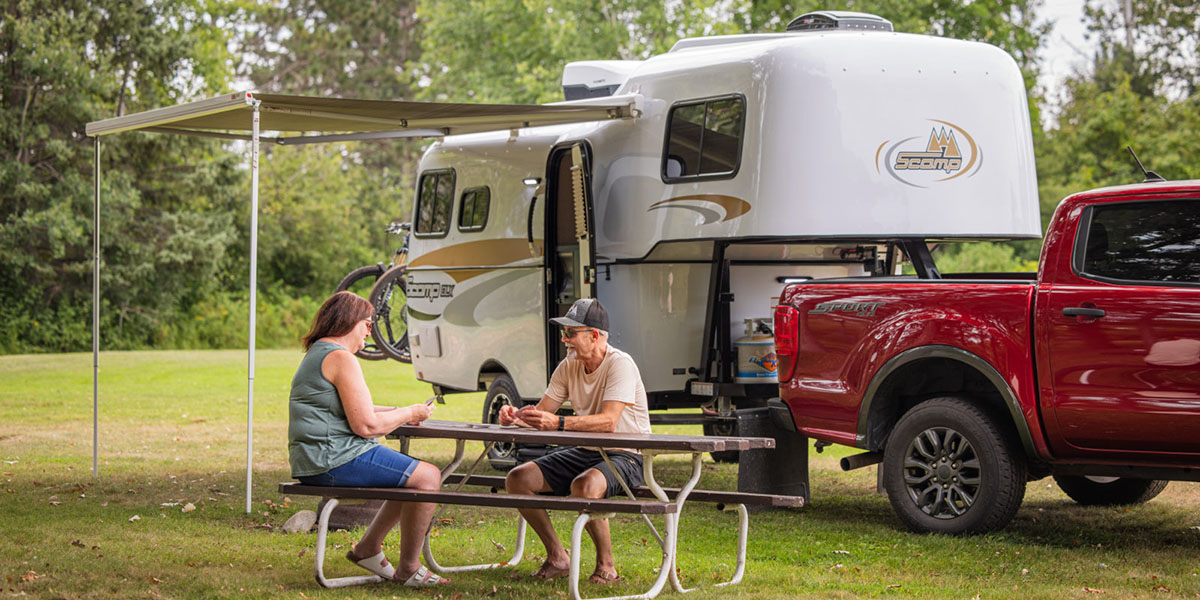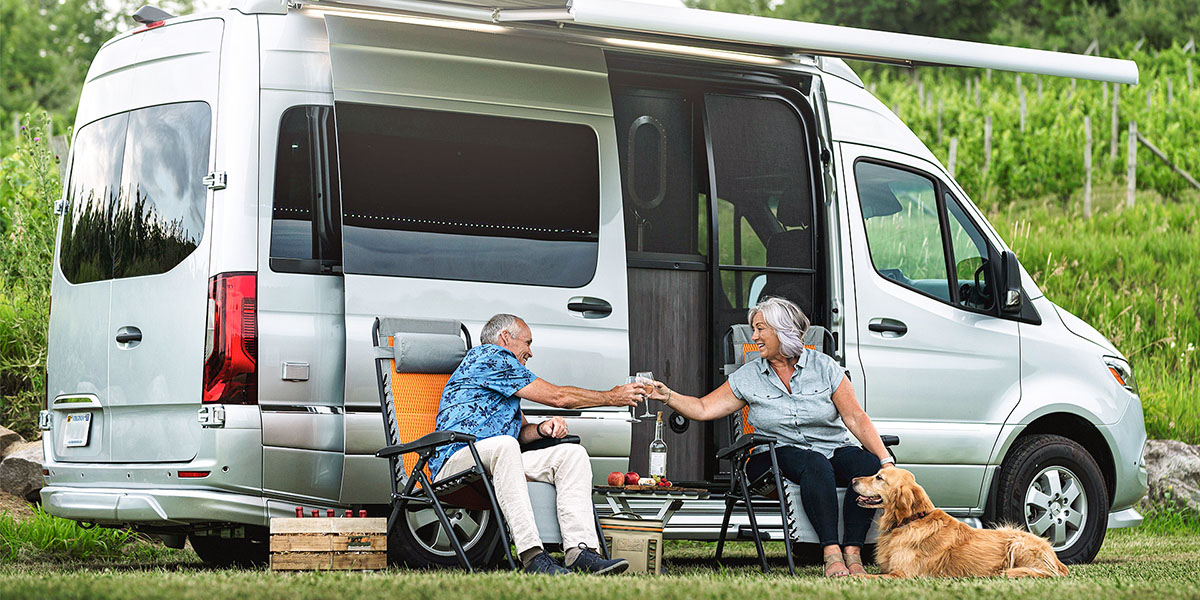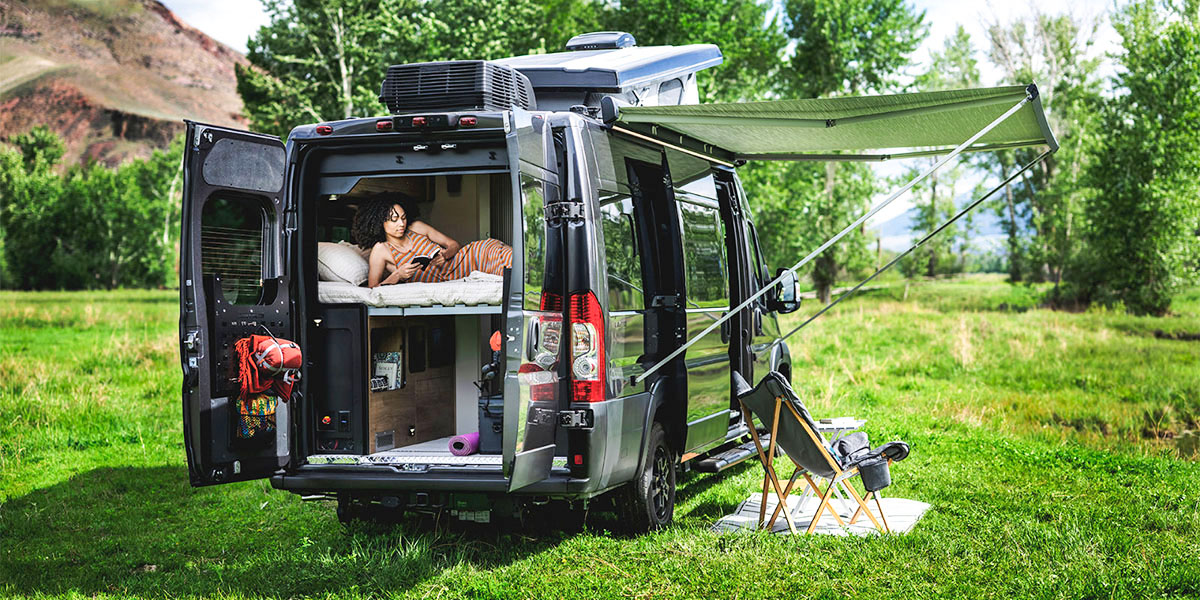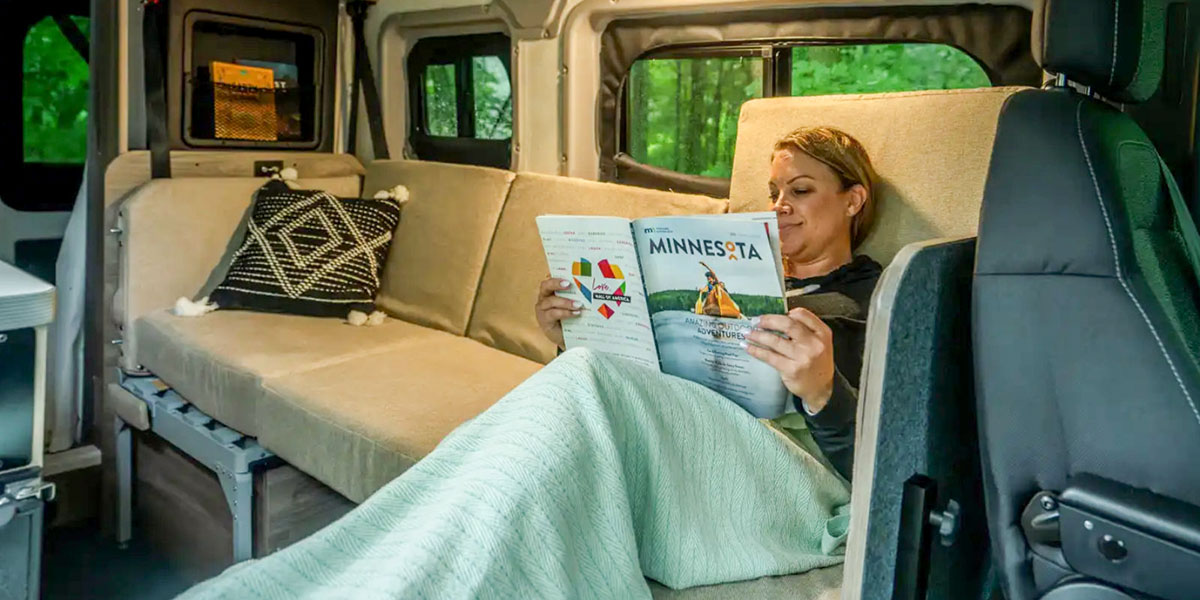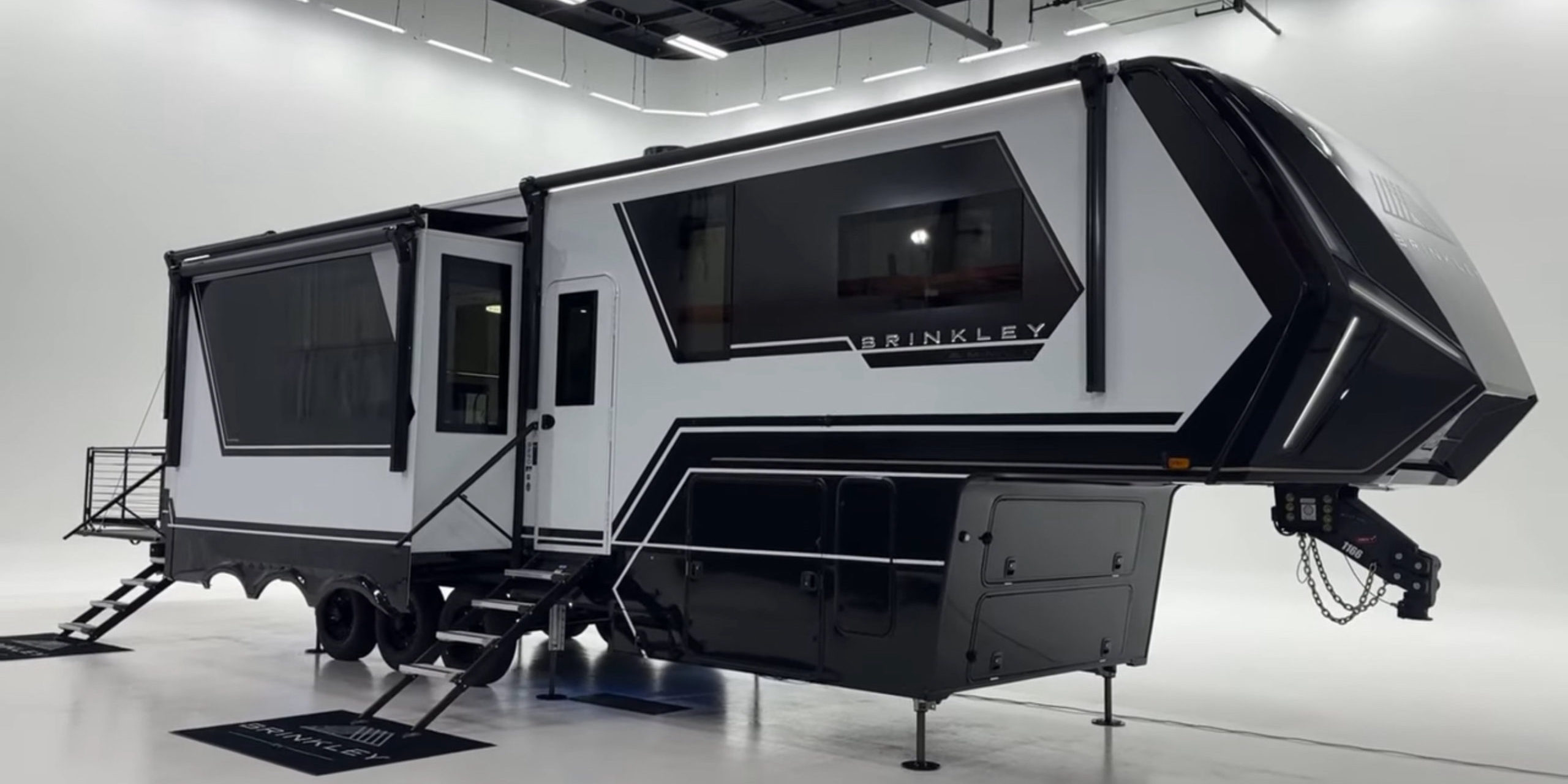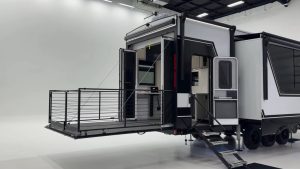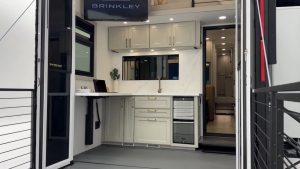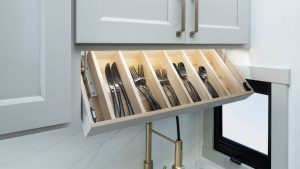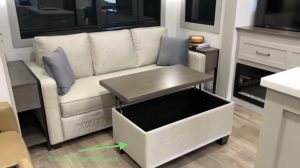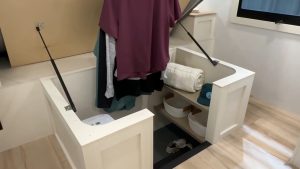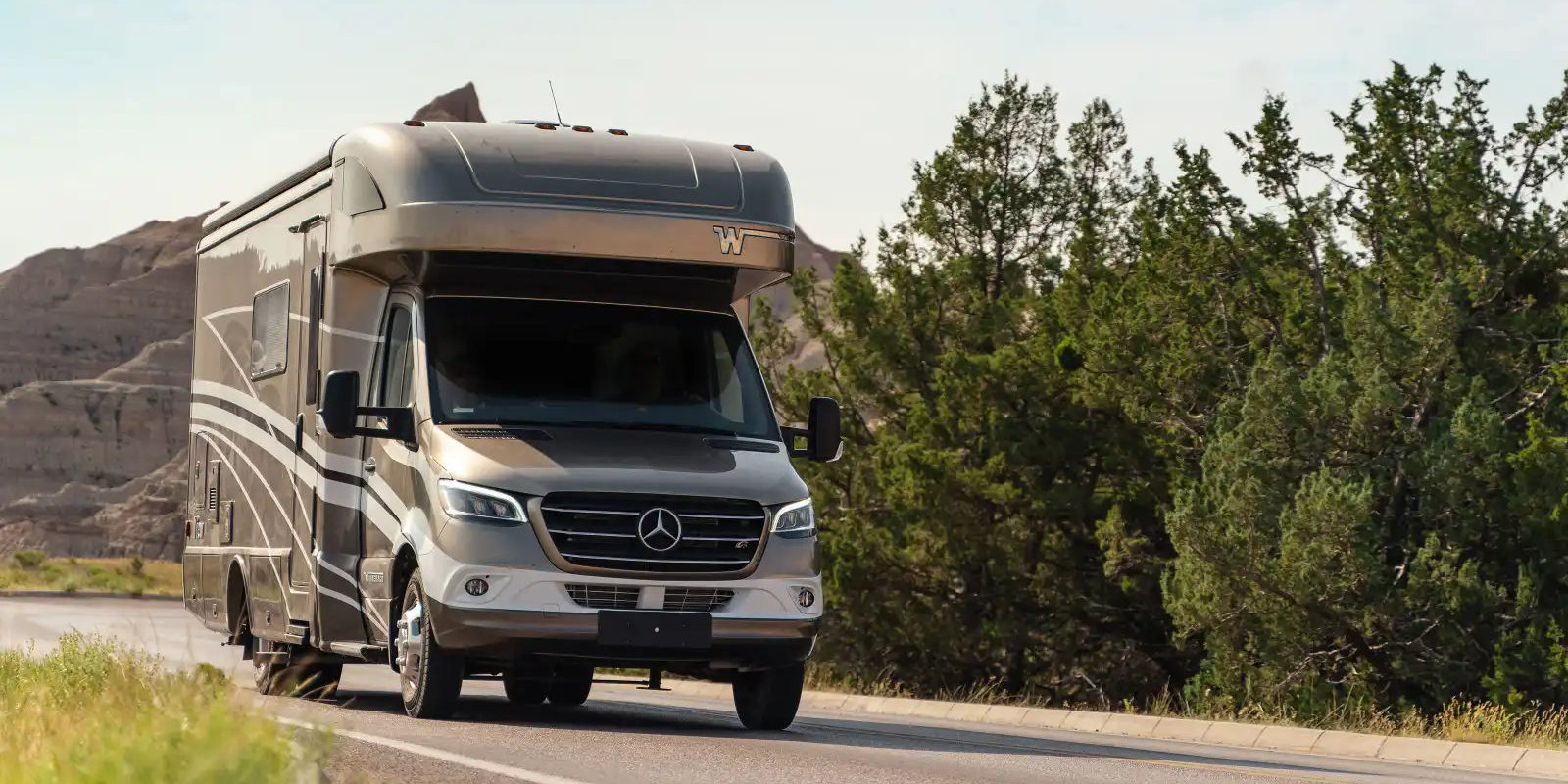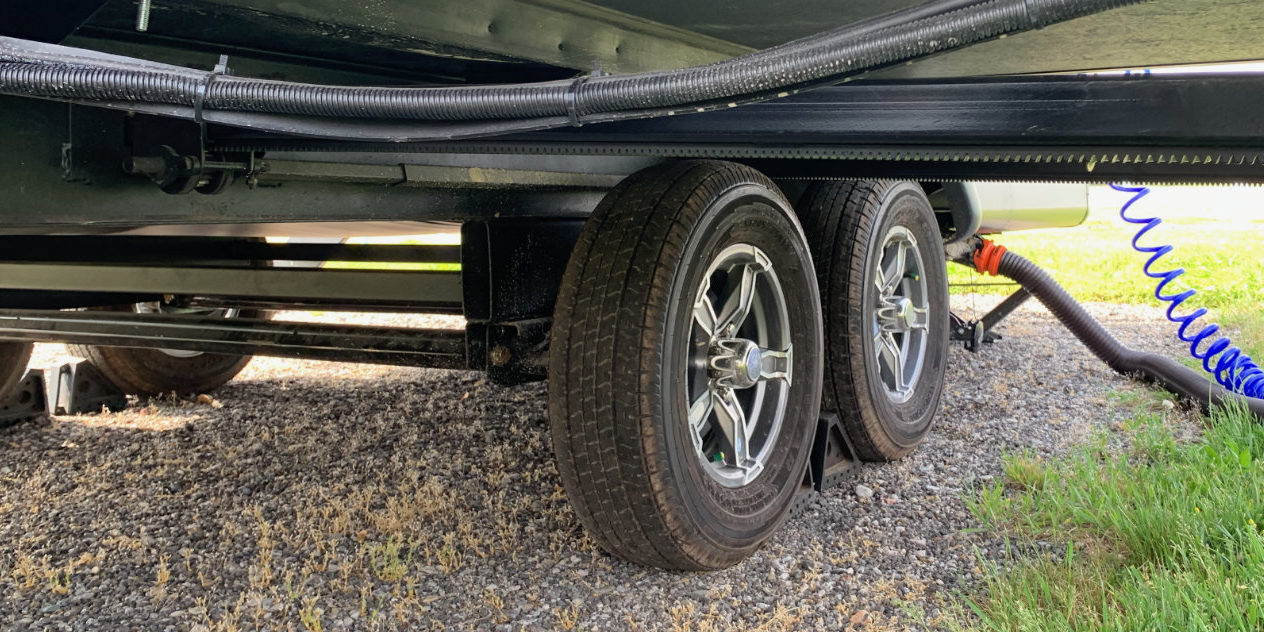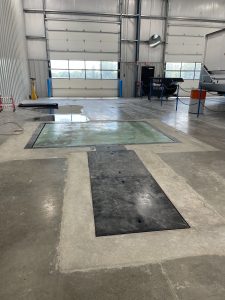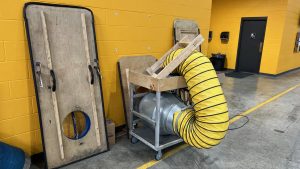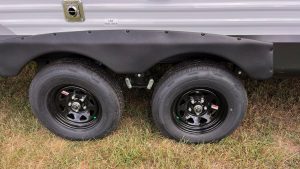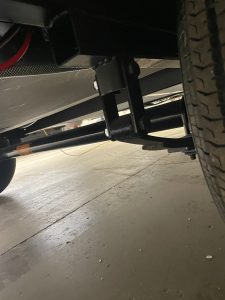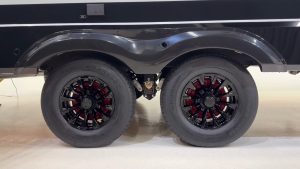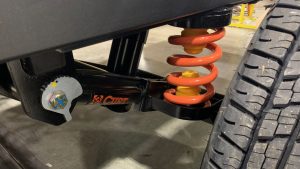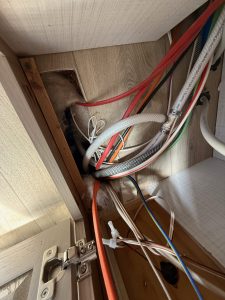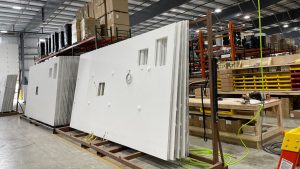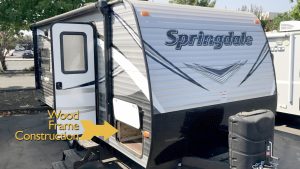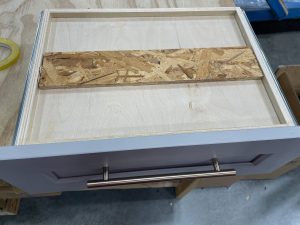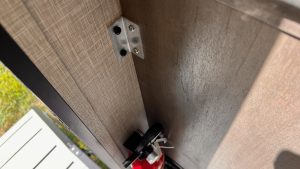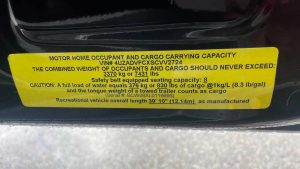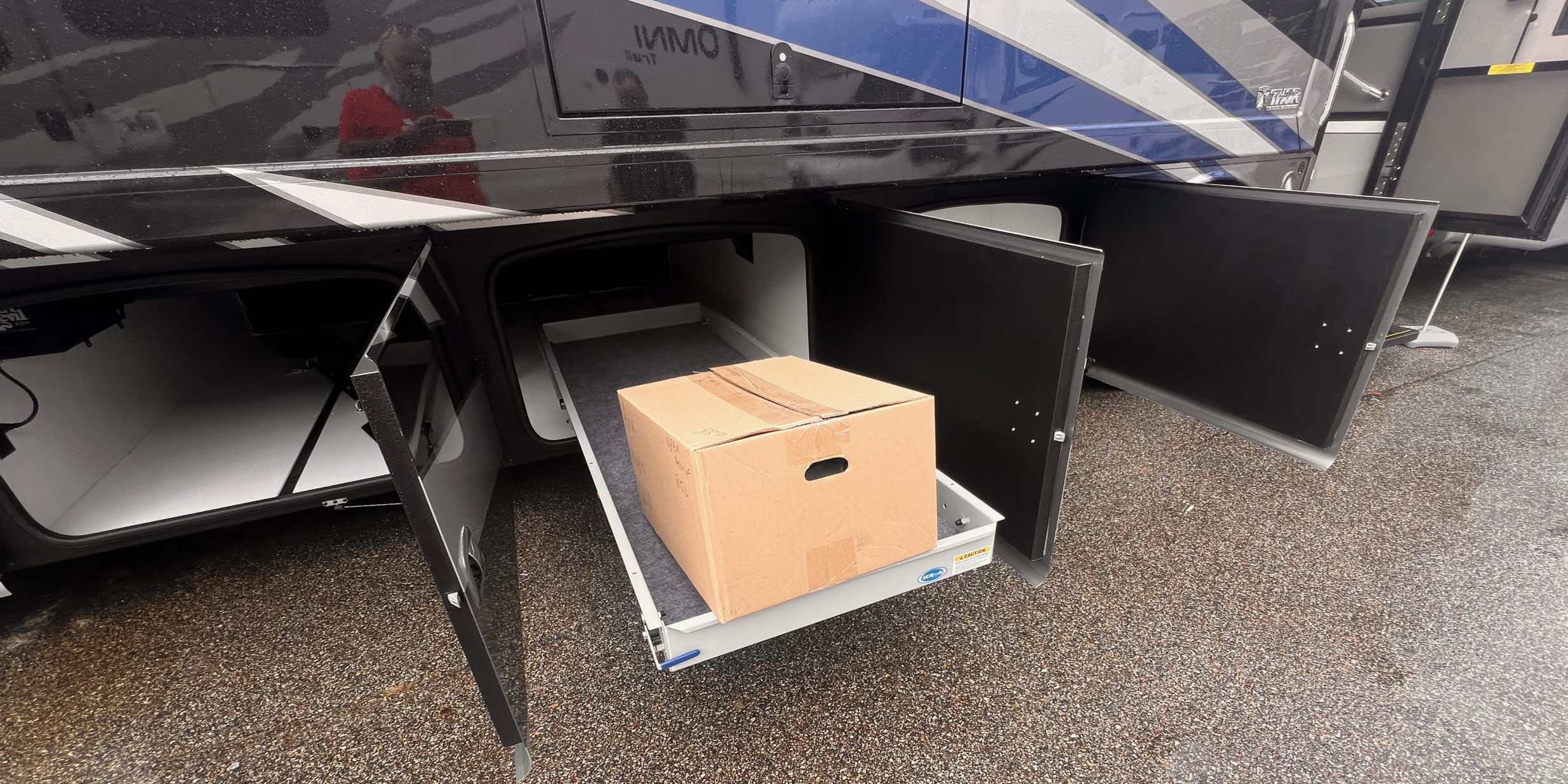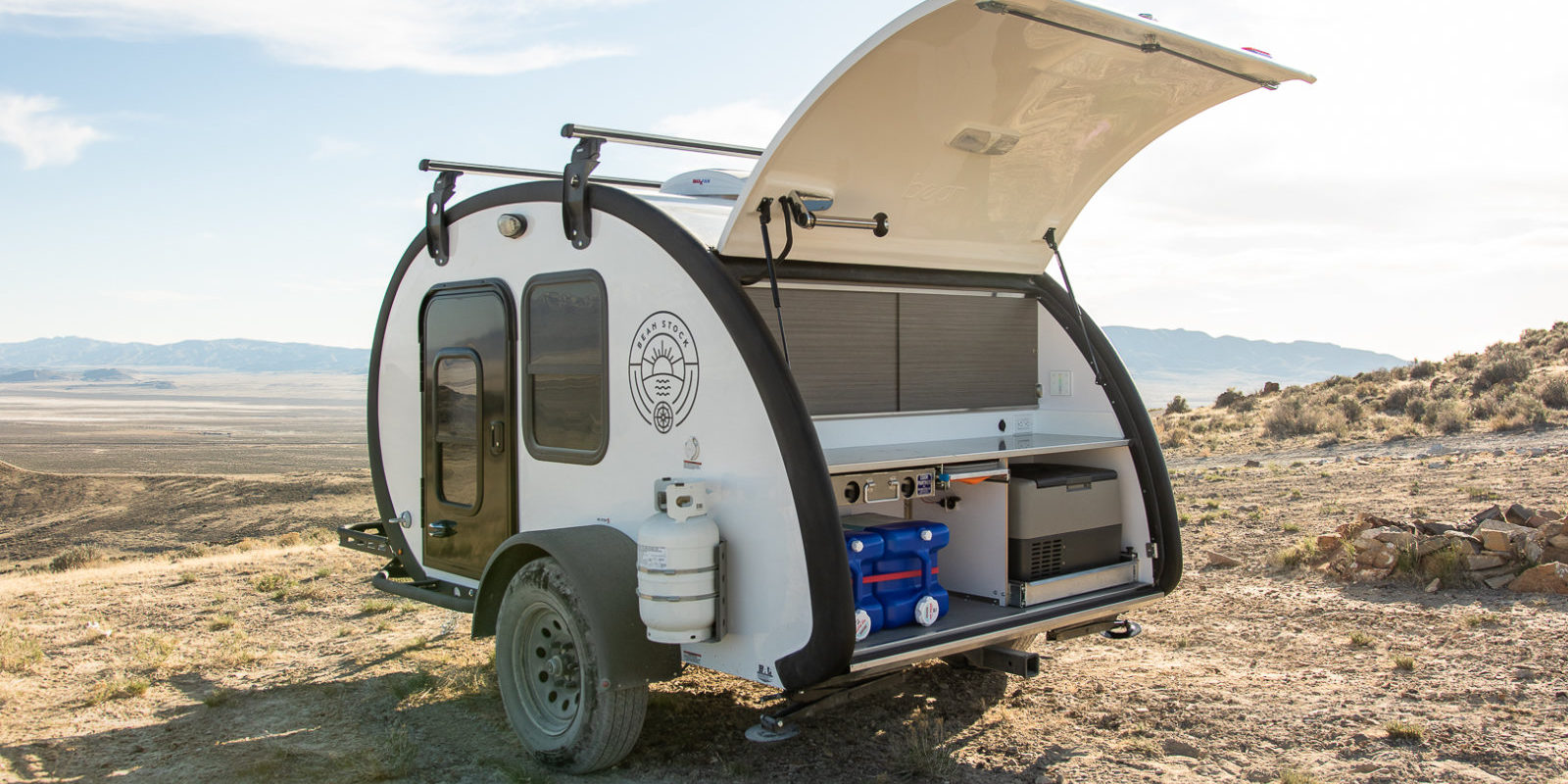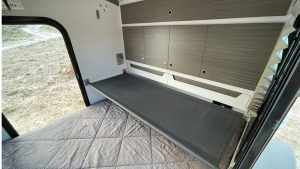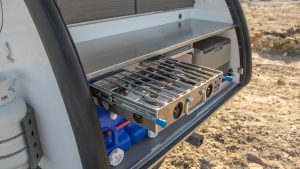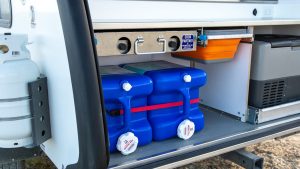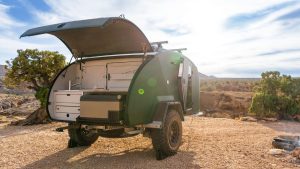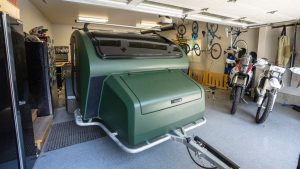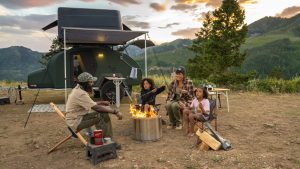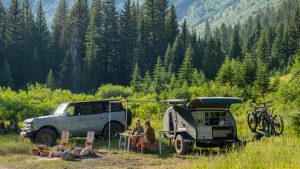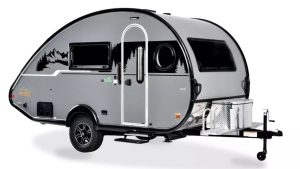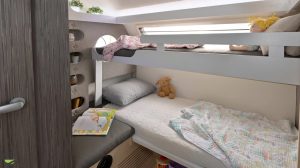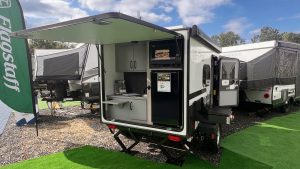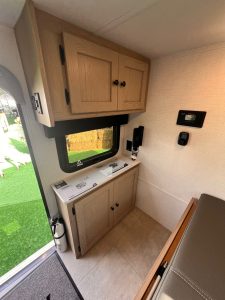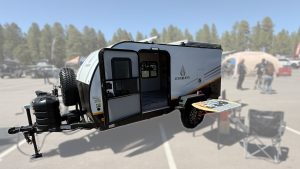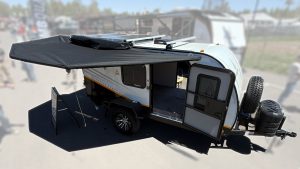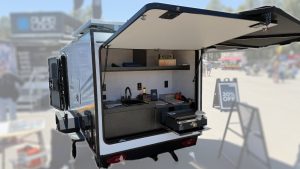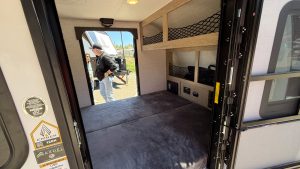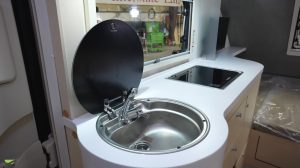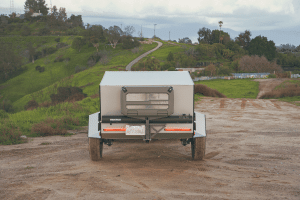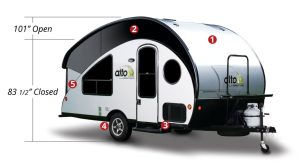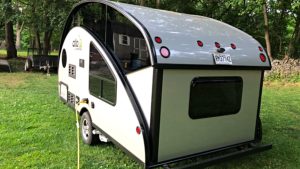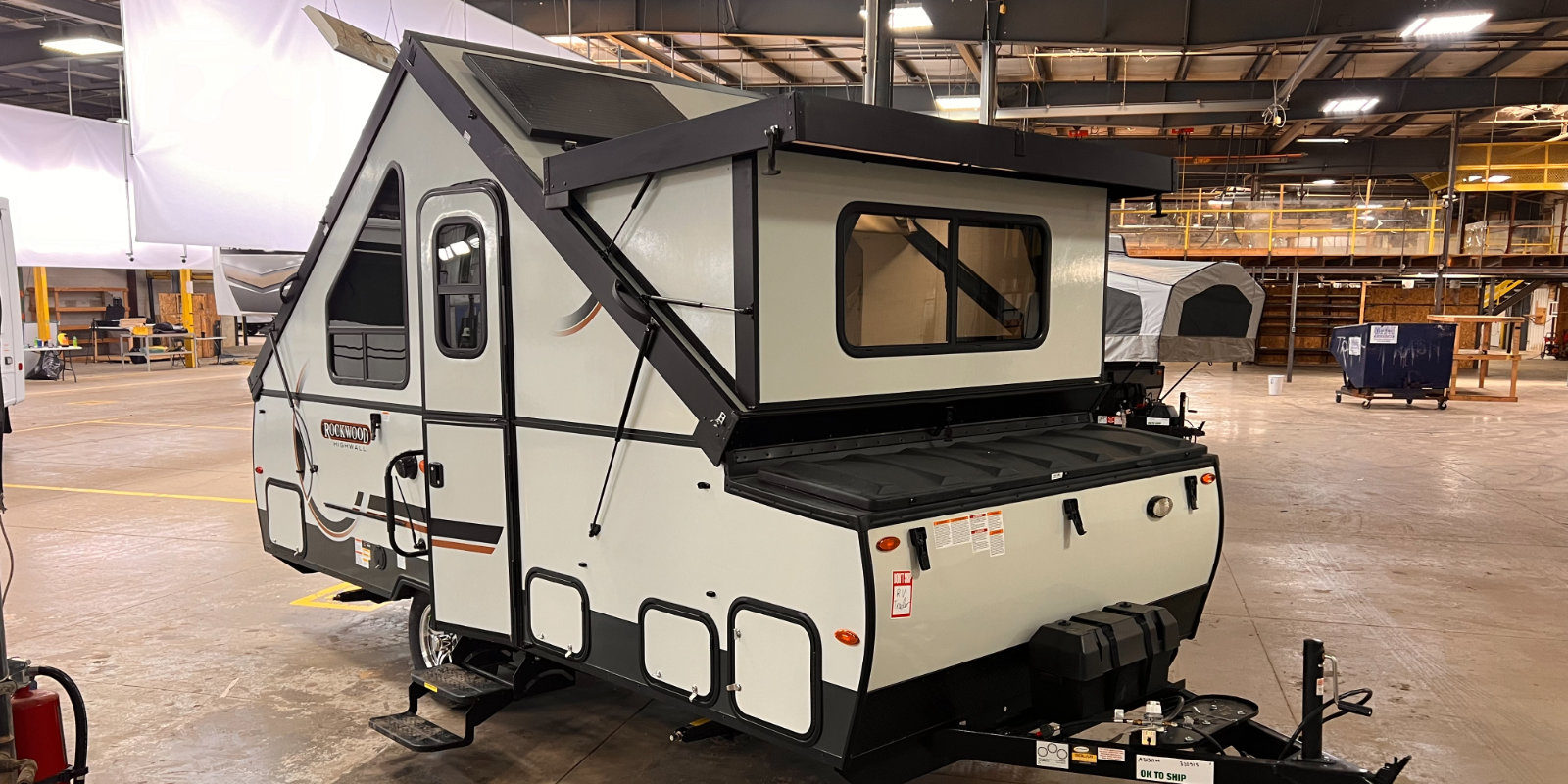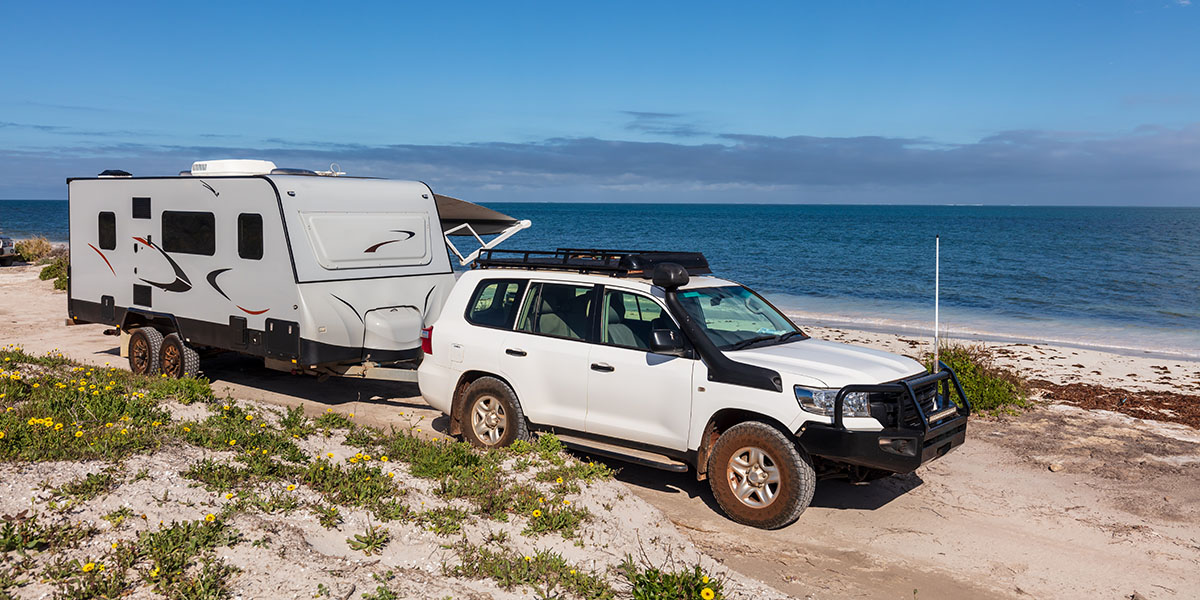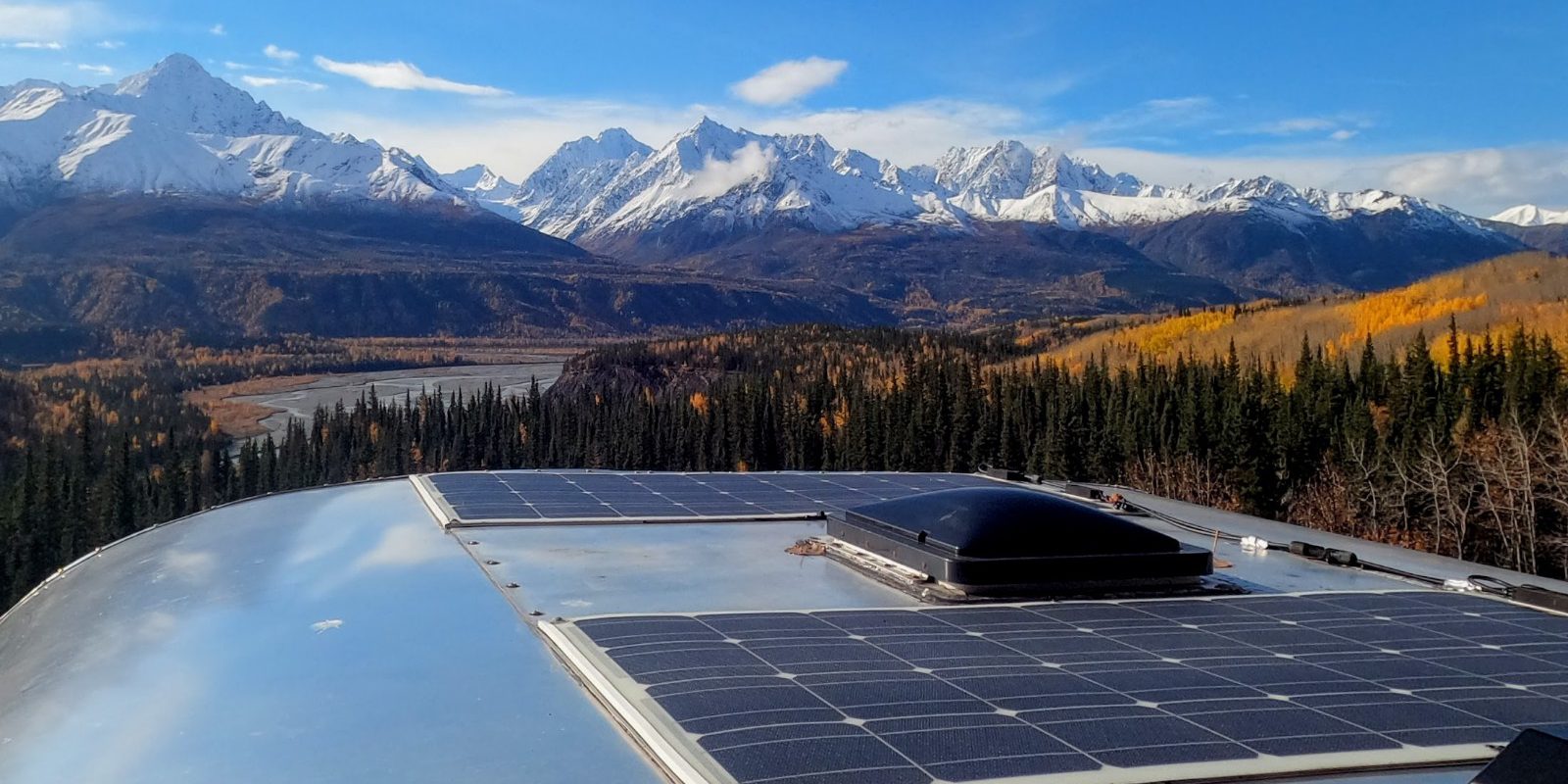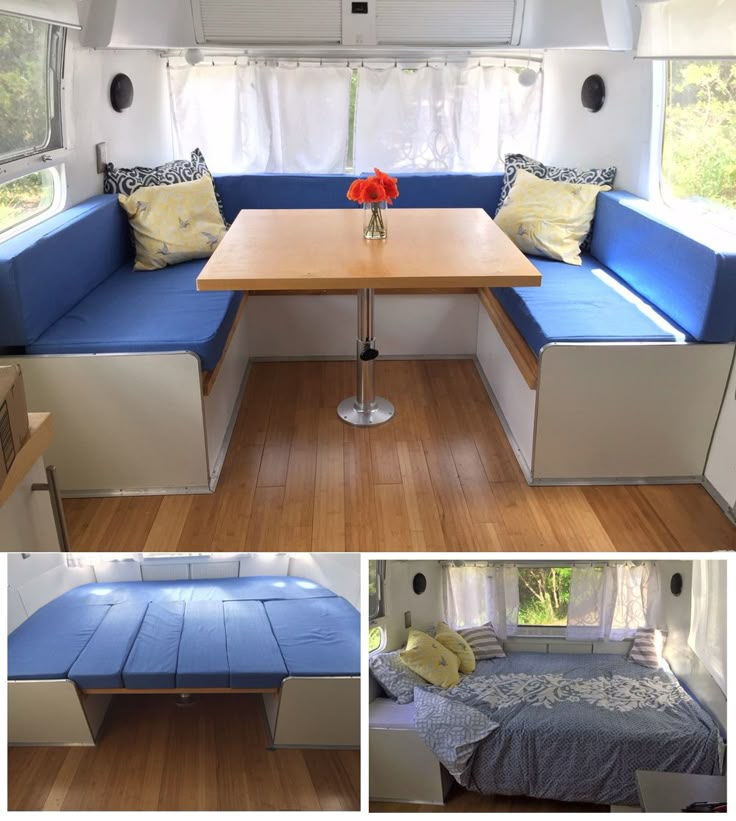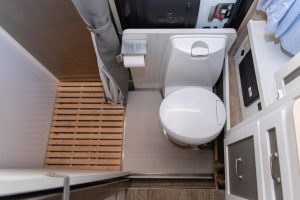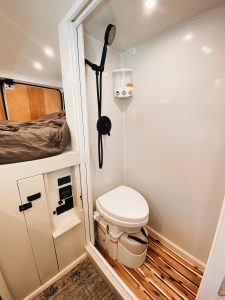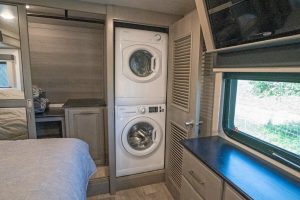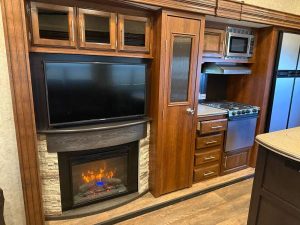Can you tow a fifth wheel with a half-ton truck? The answer is yes – and no. Between the truck, the trailer, and how you plan to use them, there are many, many variables. Beyond the facts and terminology that you need to know, there are also key questions that you need to ask.
What Is a Half-Ton Truck?
Pickup trucks can be classified a few ways, but generally speaking you’ll find them referred to as half-ton, 3/4-ton, and one-ton. A half-ton truck typically has a “1” in their name, such as F-150 or 1500. So the Ram 1500, Silverado 1500, and Ford F-150 are all half-ton trucks.
But what does that mean? Almost nothing, actually. Two identical-looking pickups sitting side-by-side at a dealer’s lot, both the same make and model, with the same badges front and back can have wildly different towing capacities.
Trucks can be outfitted so differently: engines, equipment packages, options, suspensions, and that’s before you get to aftermarket parts. Every single of those choices can impact how much a truck is able to carry. In fact, I’ve seen plenty of “half ton” trucks that were able to hold 1,800 pounds of cargo.
The first thing to do is figure out what the truck can carry. Helpfully, all truck builders put a sticker inside the driver’s door jamb that tells you what that specific truck is capable of carrying. Notice I wrote “carry” and not tow.
Let’s Talk to the Tow Police
No matter what trailer you’re hauling, know that your tow vehicle is actually carrying a portion of that trailer’s weight. While dealers of vehicles and RVs get caught up on pulling or towing capacity, the real limiting factor of almost all vehicles is carrying or payload capacity.
Towing a fifth wheel involves carrying a portion of its weight, usually about 20 percent. For example, the Rockwood Signature R281RK listed below has a dry weight of 8,203 lb with a hitch weight of 1,345 lb. If you have a truck with a cargo carrying capacity of 1,800 lb you should be good, right?
Hold on.
Everything on the truck itself is cargo. The driver, their passengers, a dog, firewood, a generator, lawn chairs, and all of that stuff has to be subtracted from the cargo carrying capacity of the vehicle because it is cargo.
Further, the trailer itself will get heavier with batteries, cargo, propane, food, and anything in the holding tanks. Oh, and don’t forget the hitch for the trailer – those can easily surpass 100 lb. Yup, that’s cargo too.
Finally, it’s one thing to be able to get the trailer moving, but you’ll also have to control it on the highway including maintaining control in crosswinds and up and down mountain roads. That requires a bit of headroom on – you guessed it – your payload capacity.
Taken all together, there are some half-ton trucks that might be able to make the numbers work, but not many. So know your numbers in advance – numbers don’t lie. If you’re looking for more information on towing, here is a great resource on RV towing.
By the way, if you’ve ever heard someone say that your truck’s payload capacity already takes the driver’s weight into account – well, they’ve been misled. Confusingly, your truck’s towing capacity does allow for a 150-lb driver, a 150-lb passenger, the weight of all tow package equipment, and 100 lb of optional towing equipment – according to SAE J2807, which outlines the calculation and testing procedure for that specific specification.
Best Fifth Wheels for Half-Ton Trucks
Now that you’re also an expert on towing, these fifth wheels might just fit the bill.
Fiberglass-Fantastic Trailers
Scamp Lite 19
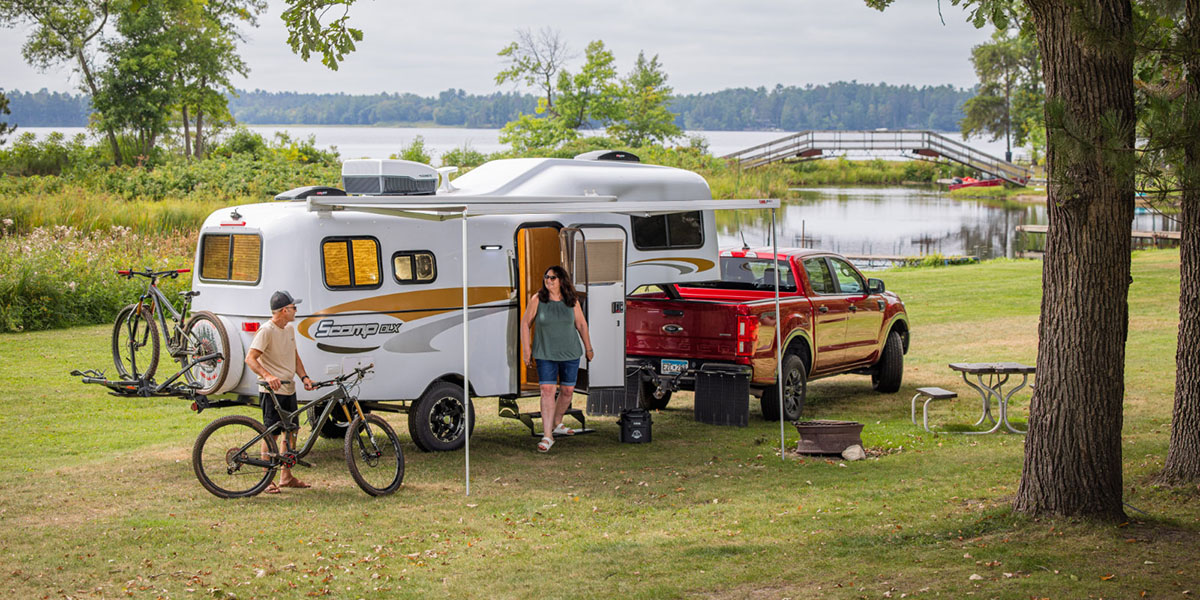
The Scamp Lite 19 is an all-fiberglass fifth wheel trailer that is very lightweight. In fact, these little fifth wheels weigh less than many travel trailers at about 2,000 lb with a dry pin weight around 400 lb. At just 19 ft long with no slide, these are very small but still offer a bed over the pin box as you would expect from a fifth wheel. There are also three floor plans to choose from.
In fact, these are so light some owners tow them with mid-size pickups such as the Ford Ranger or Chevy Colorado. One of the more unusual things about the Scamp product isn’t the trailer itself but that they are sold direct to you. This is the only single-axle trailer in this collection.
- Length: 19 ft
- Dry Weight: 2,000 lb
- Pin Weight: 400 lb
- MSRP: $37,299
Escape 5.0
Canada-based Escape trailer has a strong following and builds all-fiberglass trailers that they sell direct-to-consumer much like the Scamp line. The Escape 5.0 is a two-axle trailer and is almost three feet longer than the Scamp. It’s also a little less rounded which makes it feel more spacious inside.
Escape hangs their hats on the fact that you can heavily customize their trailers since you’re ordering directly from the factory. But all that size comes at a weight penalty compared to the Scamp, with a dry weight of 3,910 lb and a hitch weight around 646 lb dry.
- Length: 21 ft 2 in
- Dry Weight: 3,910 lb
- Pin Weight: 646 lb
- MSRP: $51,000
Traditional Fifth Wheels
The following trailers are significantly larger than their fiberglass counterparts.
Grand Design Reflection 100 24RL
The longest trailer on this list is the Grand Design 100 Series Reflection 24RL. While I’m not always a fan of a fifth wheel with the steps on the road side which blocks access to the bathroom at quick stops, Grand Design has left enough space between the steps and the slide to overcome this issue.
This RV also features a good amount of drawer space and both a dinette and couch. Grand Design is a company that has a strong reputation for customer support and has recently stepped-up their warranty coverage to reflect that reputation.
- Length: 30 ft
- Dry Weight: 7,664 lb
- Pin Weight: 950 lb
- MSRP: $62,599
Jayco Eagle SLE 24MLE
Some buyers prefer an RV with a rear kitchen and that’s what the Jayco Eagle SLE 24MLE features. This means plenty of counter space for road going chefs. There is also a trifold sofa for those extra guests as well as a four-place dinette so seating is a strong suit.
- Length: 29 ft 3 in
- Dry Weight: 7,855 lb
- Pin Weight: 1,485 lb
- MSRP: $57,699
Keystone Cougar Sport 2400RE
Keystone’s Cougar brand has a reputation for building a high-quality product with some key innovations such as a clever AC ducting system and intentional wiring that both makes servicing easier and also reduces the likelihood of needing service.
The Keystone Cougar Sport 2400RE features both theater seating and a dinette but the real magic is a flip-up table at the back that serves as a desk for students or those who want work on the road.
- Length: 28 ft 11 in
- Dry Weight: 7,474 lb
- Pin Weight: 1,345 lb
- MSRP: $49,718
Forest River Rockwood Signature R281RK
I often suggest that one look at the underside of any RV before making a buying decision. How a manufacturer specs the chassis says a lot about the rest of the rig. Rockwood is the only brand here with a new slipper roller suspension providing a better ride in the RV which means less shaking of the RV. Further, they include anti-lock brakes, one of the best safety features in towing, period.
Inside the Rockwood Signature R281RK you’ll find a substantial kitchen with a dining bar and there’s also either a hide-a-bed or theater seats as well. If there is not a Rockwood dealer near you the same trailer can be had as the Flagstaff Classic F281RK.
- Length: 28 ft 11 in
- Dry Weight: 8,203 lb
- Pin Weight: 1,345 lb
- MSRP: $74,974
So, Can You Tow a Fifth Wheel With a Half-Ton Truck?
Towing a fifth wheel with a half-ton truck is possible – but you have to have the right fifth wheel as well as the right truck. When shopping, look for the correct numbers – payload and pin/hitch weight, not towing capacity and GVWR.
As shown by this list, some fifth wheels are light enough for a half-ton. But they’re the exception, not the rule. If you’re serious about fifth wheel RVing, a three-quarter-ton truck will give you far more options – and much more peace of mind – on the road.
